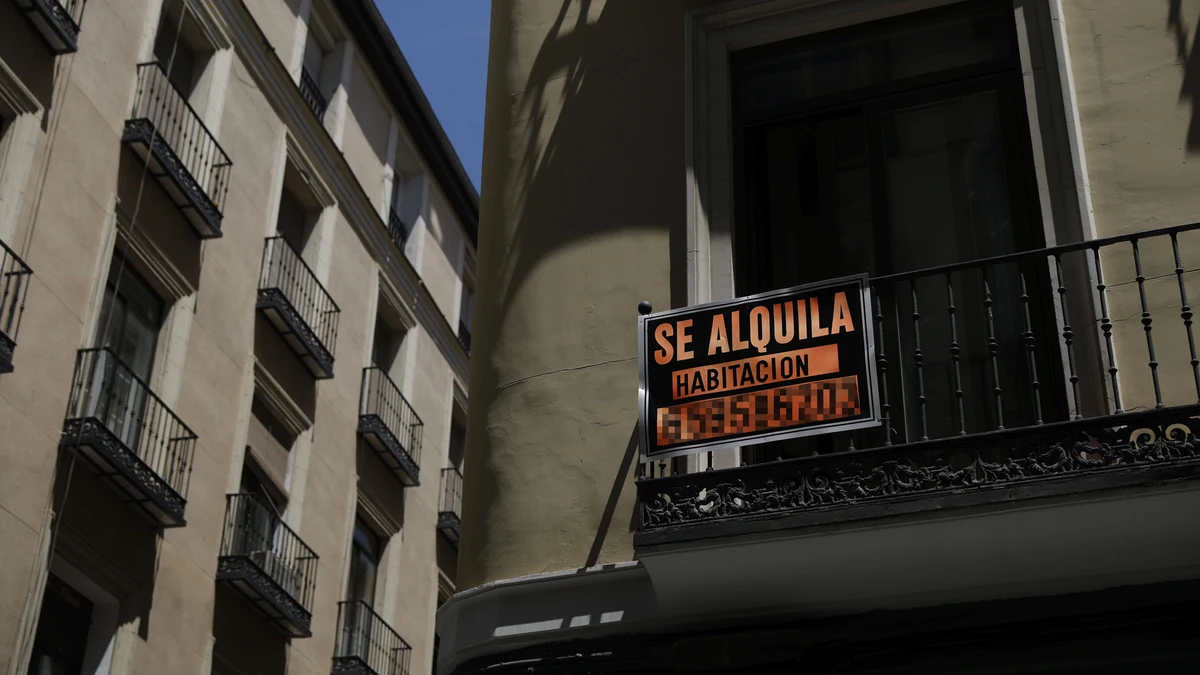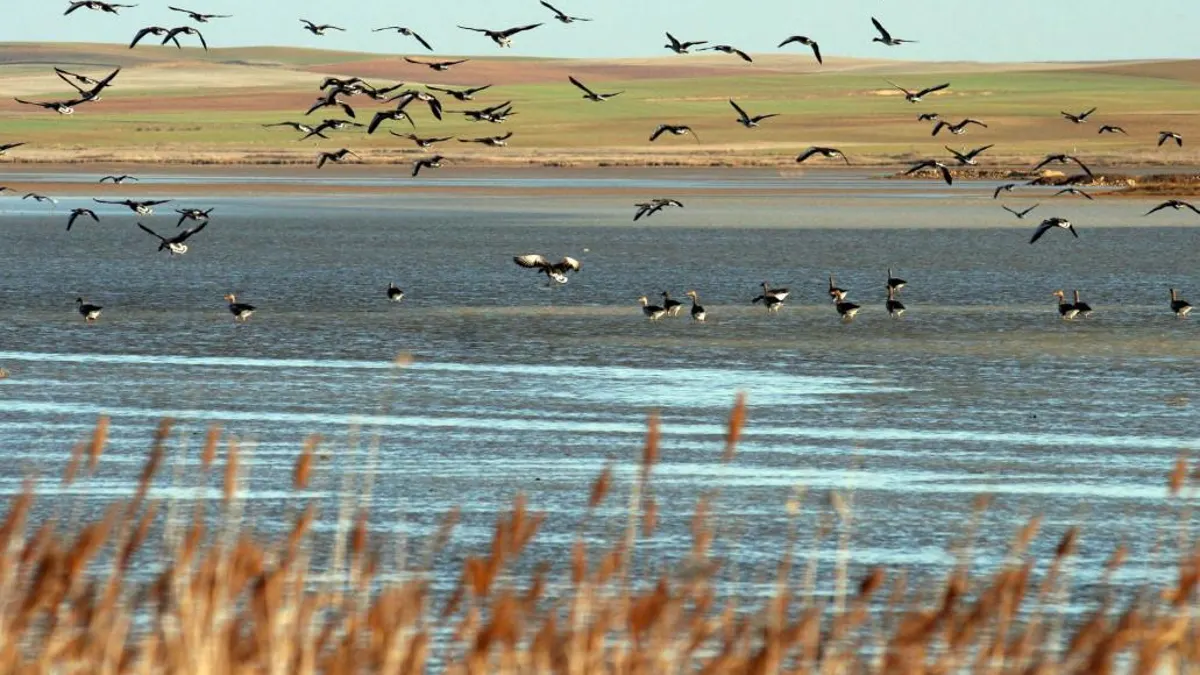Just in time for bulb-planting season, “Growing Bulbs in the Natural Garden” (Timber Press, 2024) is at hand. It is written by Jacqueline van der Kloet who has designed bulb gardens all over the world. She even designed a portion of the famous Keukenhof Gardens in the Netherlands, her native land. At Keukenhof, seven million bulbs are planted each year from October to December, with three bulbs per hole — one on top of the other with a little compost separating between them — to extend the spring blooming season. The bulb on top flowers first followed by the others.
This book concerns bulbs “in the natural garden.” In this instance, natural refers to “naturalization,” the process by which certain bulbs spread out due to their clumping growth habit. If you plant a few square feet of daffodils, flag irises, daylilies (Hemerocallis), or lily-of-the-Nile (Agapanthus), they will encompass a much larger area within a few years time. At the outset, the author makes sure we understand that the term bulb “refers not only to actual flower bulbs such as tulip and daffodil but also to corms (crocus, grape hyacinths, and gladioli), root tubers (certain anemone, dahlias, and tuberous begonias) and rhizomes (certain irises and canna lilies).” The term that categorizes all these bulb types together is geophyte, defined as any plant with an underground storage organ.
Spring is not the only season that bulbs bloom. In fact, you can have bulbs blooming in your garden throughout the year. Let’s take a look at what a year-round bulb-blooming garden would look like in Southern California.
January: Corsican hellebore (Helleborus argutifolius) is native to the Mediterranean islands of Corsica and Sardinia. This explains why it feels so at home in our part of the world, which has a wet winter, dry summer climate matches the habitat of this species. This is an evergreen larger than most hellebores, typically growing around two feet tall but occasionally reaching up to four feet when conditions for growth are to its liking. It may also self-sow. Leaves are toothed and spiny, elliptical, and may reach seven inches in length. Plant Corsican hellebore in a somewhat shady-to-mostly shady location, although it does take a dose of direct sun better than other hellebores. Deep blue-green foliage is complemented by pale green flowers.
February: Crocus flowers in February but to ensure bloom you will need to refrigerate its corms now for at least eight weeks prior to planting. If you plant bulbs that need vernalization (exposure to cold temperatures in order to flower) without prior refrigeration, they may still bloom but the plants will be stunted, the flowers will be small, blooming low inside the foliage close to the ground. Grape hyacinth (Muscari armeniacum) is a February bloomer too. Many narcissus and daffodil varieties will flower now and some may bloom as early as December. The smaller-flowed narcissus types are the best suited to our hot summer climate. They are also spicily fragrant. Tazettas such as paperwhites and jonquillas, or jonquils, are beloved for their reliable annual bloom, mini-daffodil look, and sweet, migrating scents.
March: Catalina mariposa lily is endemic to the Channel Islands and the Santa Monica Mountains. It starts to bloom at the beginning of March and will stay in bloom until the end of May. Flower petals are white to pink with a dark spot at their base. There are many other species of Mariposa lilies that you will find blooming throughout Southern California. Cyclamen grows from a tuber and flowers from late fall to mid-spring. All bulbs do best when water is withheld throughout the summer months and into early fall, but cyclamen is especially susceptible to rot unless the soil stays bone dry in warm weather. If you can somehow withhold summer watering, however, it will bloom again the following year. Extra early daylilies will start blooming in March but there are varieties that flower as late as September so by careful selection from amongst its myriad varieties, you could have some daylilies around in three seasons. What is commonly referred to as amaryllis but is actually Hippeasturm is one of the first bulbs to bloom in late winter or early spring. Its large trumpets blare in salmon, red, pink, or white and its bulbs naturalize without any care on the gardener’s part.
April: This is the middle of tulip season, which extends from March to May. These bulbs absolutely require refrigeration, the longer the better, prior to planting. Like all true bulbs, they should be planted with twice their height in soil above them. (In other words, if a bulb is three inches tall, it should be planted with six inches of soil or compost above it.) Although Dutch tulips only bloom once in our climate and then die, certain species such as lady tulips (Tulips clusiana) will come back year after year. Classic Dutch hyacinths (Hyacinthus orientalis) in pink, purple, and white are also blooming now but, like Dutch tulips, will only flower a single time. However, the related Spanish bluebells (Hyacinthioides hispanica) also bloom in April, but will continue to bloom again from one year to the next. African cornflag (Chasmanthe floribunda) is another April bloomer. A single specimen I planted a few years ago has now spread through self-sowing throughout my garden.
May: Harlequin flower (Sparaxis tricolor), as its species name reveals, is unique among bulbs (well, it actually grows from a corm) in having three colors: a colored central disk, another color in a circle around this disk, and another — orange, red, purple, or pink — in the petals themselves. Ornamental onions are often overlooked when planting a bulb garden and this is regrettable since their bulbs do not require exposure to cold to bloom. Giant onion (Allium giganteum) is the most notable of the group as its stems reach 18 inches in height and its purple floral clusters, consisting of dozens of florets, can reach eight inches in diameter. Chinese ground orchid (Bletilla striata) grows from rhizomes and spreads prolifically when given morning sun. Flowers are pinkish purple and bloom from May until the fall. Alstroemeria will be in full bloom by now with funnel-shaped blooms in pink, tomato red, mauve, purple, orange, and yellow. This plant spreads prolifically by rhizomes and seeds and its cut flowers last longer than any of those mentioned in this column.
June: Cannas — Canna lilies as they are sometimes called — will bloom from June through October. Flowers are displayed in yellow, orange, pink, red, or white. Banana-like foliage can be green, burgundy or variegated with white and green stripes. One of the most popular varieties is Canna Tropicanna, featuring orange flowers whose unparalleled leaves show off alternating burgundy, orange, yellow, and green stripes. Bearded irises bloom from early spring to mid-summer. One of the best places to view them is at the Descanso Gardens, where a large collection is to be found adjacent to the rose garden. Gladiolus is blooming now and may hold its flowers for a month or longer. One of the problems with this elegant plant is that it flops over unless staked. The solution to this problem is to plant it underneath a shrub. The shrub foliage that surrounds its thin stem as it grows serves as a support. Your gladioli will thus grow tall and straight and you can enjoy their flowers without concern that they will topple over momentarily. Two stalwart bloomers come into their own this month: If you like bluish-mauve to purple, plant lily-of-the-Nile (Agapanthus) and if you like yellow, orange, or various shades of red, plant daylilies (Hemerocallis).
July: Dahlias are the glory of the summer bulb garden. Their tuberous roots do not require chilling but they should be soaked for one hour prior to planting as they are often dry when you get them. They must be hydrated and turgid to grow properly. The Getty Center always has an outstanding collection of dahlias that remain in bloom until October when shorter days signal a reduction in flower production. Tuberous begonias are also planted at this time, although they are available as whole plants sold in containers. Some consider their flowers to be as perfect as roses – in pastel pink, yellow, orange, and red – which they closely resemble.
August: Giant squill (Urgintea marítima) produces six-foot-tall stems studded with hundreds of white star-shaped blooms. Unlike other bulbs, which are typically planted at a depth equal to three times their height, this one can be planted with most of its bulk above the soil surface, an interesting spectacle in itself. Giant squill does not bloom every year. However, it’s worth the wait when you see it flower. Even in those years when it doesn’t bloom, foliage is stunningly curvaceous and blue-green in color. Calla lily (Zantedeschia aethiopica) shows off its voluptuous white spathes with yellow spathes in the center at this time of year. No plant is more suited to the shade garden and no plant requires less attention than this rhizomatous species.
September: Naked lady (Amaryllis belladonna) was dubbed with this name since its pink trumpet flowers on tall stems emerge when it is leafless. This is a boon to the fall garden when most other flowering plants are in decline. Naked lady spreads without attention until it suddenly has established a sizable clump that cannot be ignored.
October: Several notable lilies bloom in October including: oxblood lily (Rhodophiala bifida), whose opulent flowers are an arresting deep red in color; spider lily (Lycoris spp.), with flowers in red or pink, whose many spidery stamens are responsible for its name; rain lily (Zephyranthes candida), boasting pristine white flowers and brilliantly contrasting orange stamens that develop on the terminals of thin grassy flower stalks.
November: Oxalis purpurea is a sorrel, with foliage that resembles that of ordinary clover. It grows from bulbs but has rhizomatous roots. Flowers of the Grand Duchess variety may appear in pink, magenta, lavender, or white with burgundy leaves.
December: Three bulb plants flower year-round, including during the winter months. Society garlic (Tulbaghia violacea) has leaves redolent of garlic and this deters some gardeners from planting it. Flowers are lavender and the plant quickly spreads with a bare minimum of water. Bulbilnella floribunda blooms most heavily in winter with clear yellow flower spikes. Purple shamrock (Oxalis triangularis) possesses triangular, deep purple leaves and is suitable for both outdoor planting and growing indoors.
California native of the week: Triteleia clementina or San Clemente Island Triteleia is an endangered bulb plant that is endemic to the island for which it is named. It may be found growing there in moist niches carved out of rocky cliffs. Stems rise up to 16 inches upon which clutches of more than two dozen light blue flowers with purple veins are seen in March and April. You can find this bulb and most of the others mentioned in this column at telosrarebulbs.com.
If you have a bulb plant you would like to recommend, please send your experience with it to joshua@perfectplants.com. Your questions, comments, garden conundrums and successes are always welcome.
Related Articles
How to make the most of your compost in the garden
Here’s what to plant and transplant in the garden this week
Why the 2025 Color of the Year seems a little muddled right now
These lovely ornamental plants are actually on invasive species list
The trees, herbs and vegetables to plant right now in the garden

























